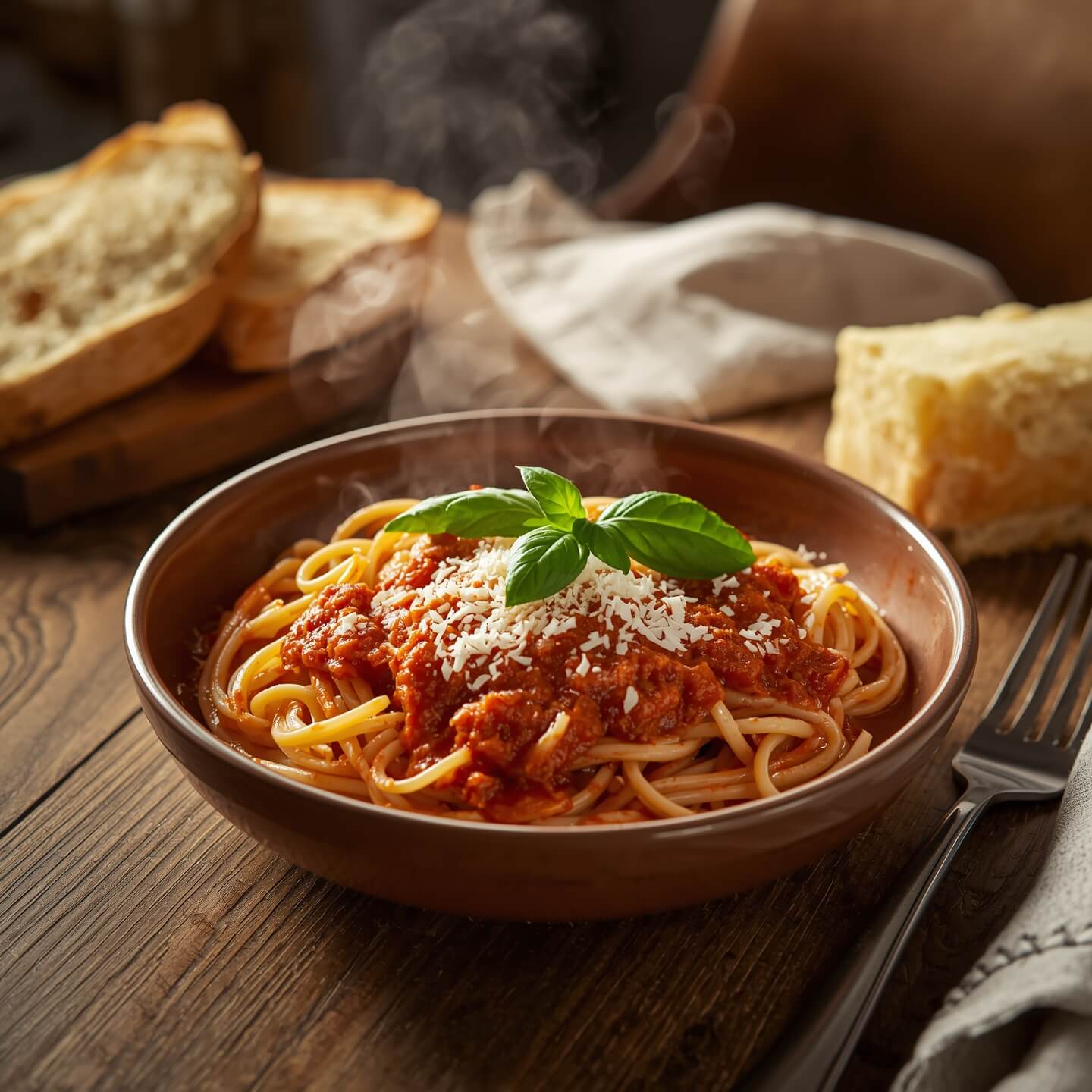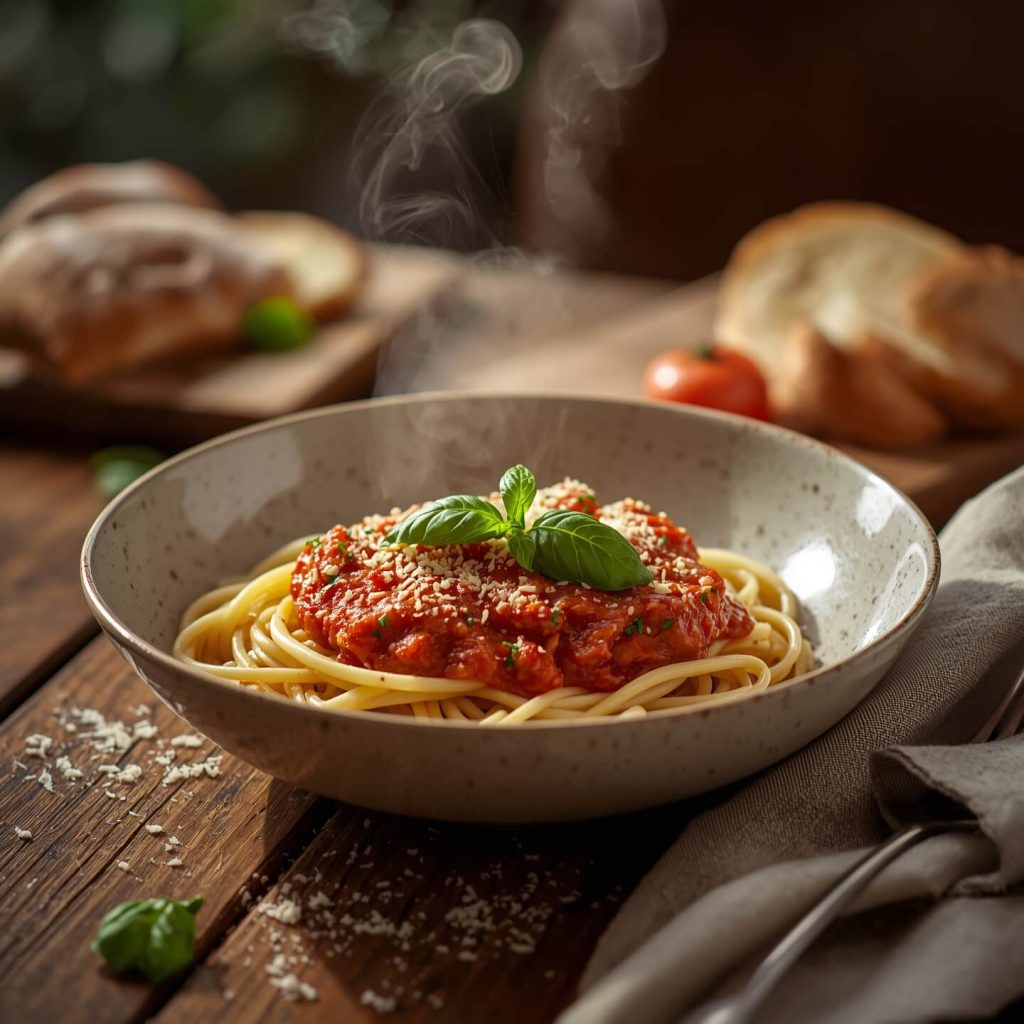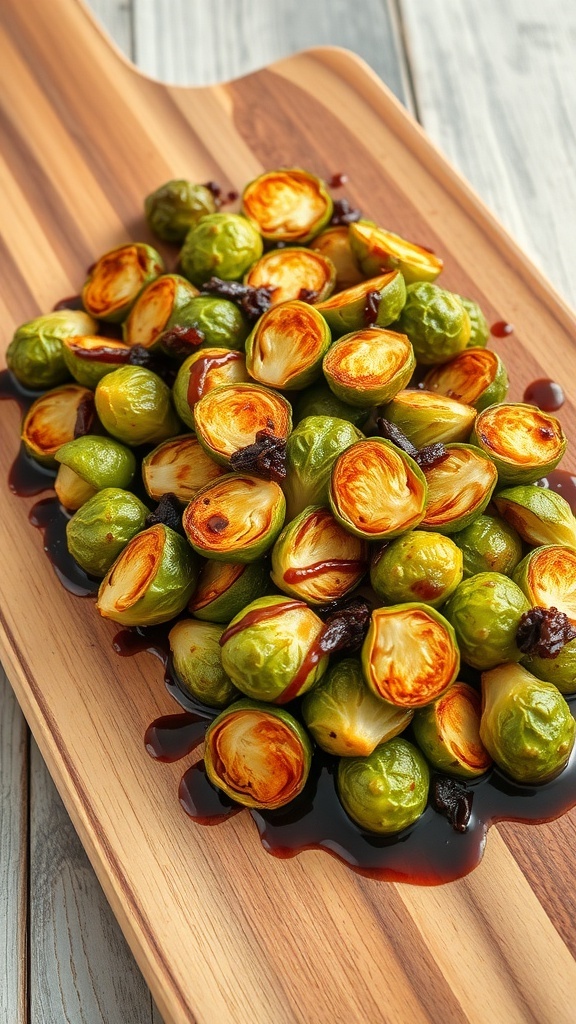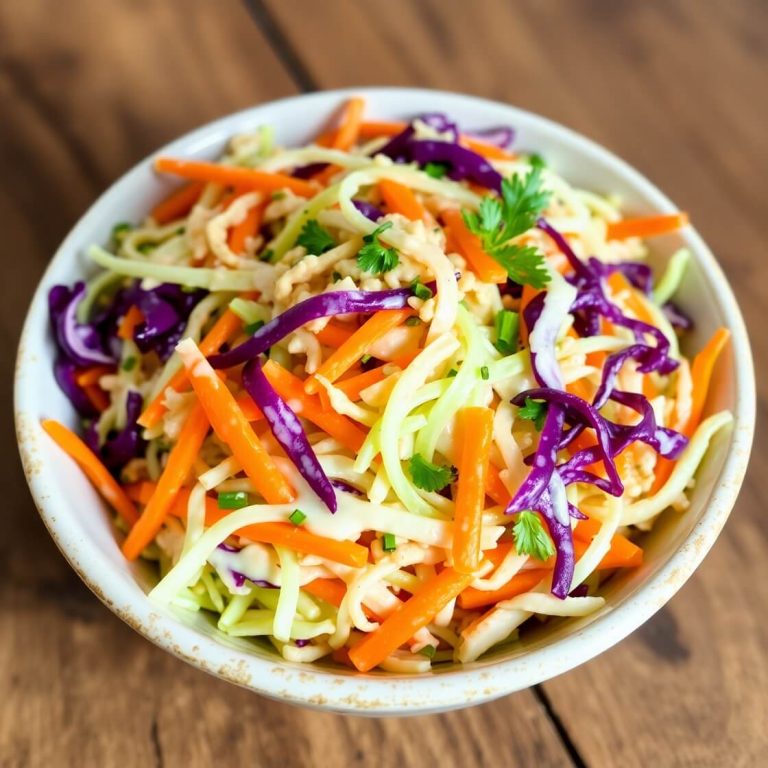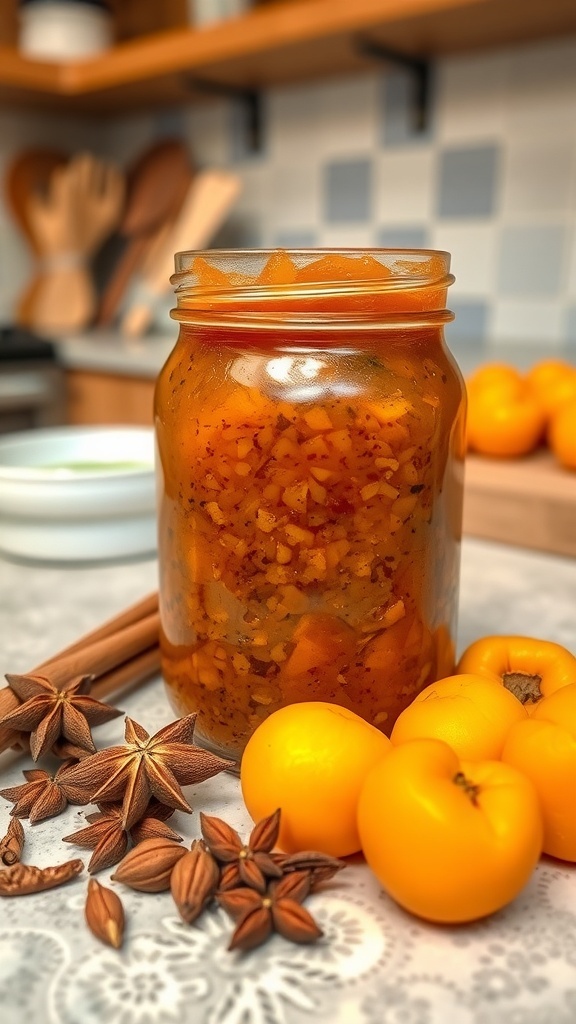There’s something truly comforting about the aroma of a rich, homemade spaghetti sauce simmering on the stove. For me, this recipe isn’t just about cooking; it’s about bringing the family together, evoking memories of Sunday dinners, and enjoying the pure satisfaction of making something from scratch. I created this homemade spaghetti sauce because store-bought sauces often feel too processed, too sweet, or lack the depth of flavor that fresh ingredients provide.
I wanted a sauce that balances tanginess, sweetness, and a hint of savory herbs while still being incredibly versatile. This recipe has been a staple in my kitchen for years, perfect for topping spaghetti, lasagna, or even as a base for pizza. The best part is how flexible it is—you can make it chunky or smooth, add a little heat or keep it mild, and even adjust it for dietary preferences.
If you’ve ever wanted to elevate your pasta game and impress your family or friends without relying on canned sauces, this is your go-to recipe. Keep reading, and I promise you’ll have a sauce that feels like it was simmered in an Italian grandmother’s kitchen.
Why I Love This Recipe
I absolutely love this homemade spaghetti sauce because it’s more than just a pasta topping—it’s a labor of love. Every time I make it, I feel like I’m capturing that essence of warmth, family, and tradition. The magic lies in the slow cooking, allowing the tomatoes, garlic, and herbs to develop a depth of flavor that is unmatched by store-bought options.
The specialty of this recipe is its perfect balance. You get the tang of fresh tomatoes, the sweetness of a touch of sugar or carrot, the earthy aroma of sautéed onions and garlic, and the richness from olive oil and herbs. This sauce is naturally rich, hearty, and comforting. It’s also incredibly versatile; you can tweak it to be meat-based or vegetarian, spicy or mild, chunky or smooth.
People make this sauce because it’s dependable, delicious, and incredibly satisfying. Once you taste the difference between a homemade and store-bought sauce, you’ll never go back. It’s the kind of recipe you can feel proud of serving to guests while keeping it simple enough for a weeknight dinner.
Ingredients for Homemade Spaghetti Sauce
Every ingredient in this sauce plays a crucial role, so I never compromise. Here’s what I usually have on hand to make this flavorful masterpiece:
- Olive oil: The foundation of the sauce; it adds richness and carries the flavors of garlic and onions.
- Onions: Finely chopped; they provide sweetness and depth when sautéed.
- Garlic: Freshly minced for that unmistakable aroma and flavor.
- Crushed tomatoes: The heart of the sauce; I prefer San Marzano tomatoes for their natural sweetness and low acidity.
- Tomato paste: Adds concentrated tomato flavor and thickens the sauce beautifully.
- Fresh herbs: Basil, oregano, and thyme work together to create an aromatic base. Dried herbs can be used in a pinch.
- Red pepper flakes: Optional, for a hint of heat.
- Sugar: A small amount helps balance the acidity of the tomatoes.
- Salt and pepper: To taste, enhancing all the flavors naturally.
- Optional ingredients: A splash of red wine, grated carrot for sweetness, or a bay leaf for added complexity.
The freshness and quality of your ingredients make all the difference. I like to choose organic tomatoes and fresh herbs when possible—they really elevate the sauce.
How Much Time Will You Need
This recipe requires some patience, but the reward is worth it. You can expect:
- Preparation time: 15-20 minutes
- Cooking time: 45-60 minutes, depending on how thick and rich you like your sauce
- Total time: About 1 hour to 1 hour 20 minutes
The key is to simmer the sauce gently, letting all the flavors meld together. Rushing this step will result in a sauce that tastes flat, so I recommend using this time to prep other elements of your meal or simply enjoy the aroma filling your kitchen.
How to Make This Homemade Spaghetti Sauce
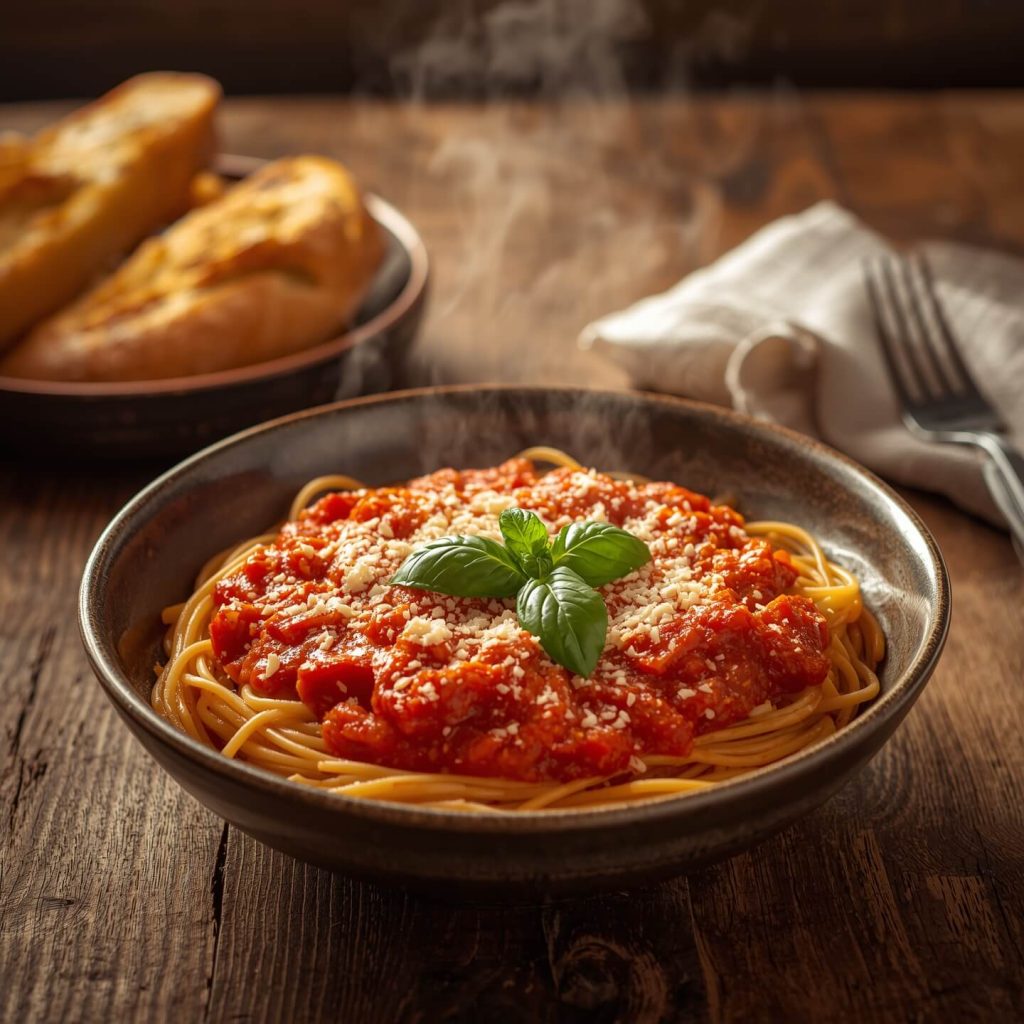
Step-by-step, here’s how I bring this sauce to life. Follow along closely, and you’ll have a restaurant-quality sauce in your own kitchen.
Step – 1: Heat a generous splash of olive oil in a large, heavy-bottomed pot over medium heat. Add the finely chopped onions and sauté until they become translucent and lightly golden, about 5-7 minutes.
Step – 2: Add the minced garlic and cook for another 1-2 minutes, until fragrant. Be careful not to burn it—garlic can turn bitter if overcooked.
Step – 3: Stir in the tomato paste and cook for 2-3 minutes. This step caramelizes the tomato paste, giving the sauce a deeper flavor.
Step – 4: Add the crushed tomatoes, followed by your herbs—basil, oregano, thyme—and any optional ingredients like red wine or bay leaf. Stir everything to combine.
Step – 5: Season with salt, pepper, and a pinch of sugar. Bring the sauce to a gentle simmer, then reduce the heat to low.
Step – 6: Let the sauce simmer uncovered for 45-60 minutes, stirring occasionally. This allows the flavors to develop and the sauce to thicken naturally. Taste and adjust seasoning as needed.
Step – 7: Remove from heat, discard any bay leaves, and optionally blend the sauce for a smoother texture using an immersion blender.
Step – 8: Serve immediately over freshly cooked pasta, or let it cool and store for later use.
Substitutions
Sometimes, you might want to adapt this sauce to your pantry or dietary needs. Here are some ideas:
- Tomatoes: If you don’t have crushed tomatoes, you can use fresh tomatoes, peeled and chopped, and simmer until soft.
- Herbs: Fresh herbs are ideal, but dried herbs work too; just reduce the quantity to avoid overpowering the sauce.
- Oil: Olive oil is my preference, but avocado oil or grapeseed oil can be used as a neutral substitute.
- Sweetener: If you prefer a natural alternative, finely grated carrots or a touch of honey works beautifully.
- Spice: For heat, chili flakes or a dash of cayenne pepper can be added.
Experimenting with substitutions can help you create a sauce that perfectly matches your taste or dietary requirements.
Best Side Dishes for Homemade Spaghetti Sauce
To elevate your meal, I love pairing this sauce with:
- Garlic bread, crusty and golden, perfect for dipping in the sauce
- A fresh green salad with a simple vinaigrette to balance the richness
- Roasted vegetables like zucchini, bell peppers, and mushrooms for added texture and flavor
These sides make the dining experience complete, creating a meal that’s hearty, flavorful, and satisfying.
Serving and Presentation Tips
Serving homemade spaghetti sauce is as much about visual appeal as it is about flavor. I like to serve this sauce over freshly cooked spaghetti, letting the noodles soak up the rich, aromatic sauce. For a restaurant-style presentation, twirl the pasta neatly on each plate using a fork and ladle a generous spoonful of sauce on top.
Sprinkle freshly grated Parmesan cheese or Pecorino Romano over the top, and add a few fresh basil leaves for a pop of color. For a rustic touch, serve in a shallow pasta bowl with a side of crusty bread or a small salad. Even a drizzle of extra virgin olive oil at the end can make the dish look and taste elevated.
Presentation doesn’t have to be complicated—sometimes simplicity is the key. Allow the vibrant red of the sauce to be the star while the other elements complement it subtly.
Tips and Tricks to Make This Recipe Even Better
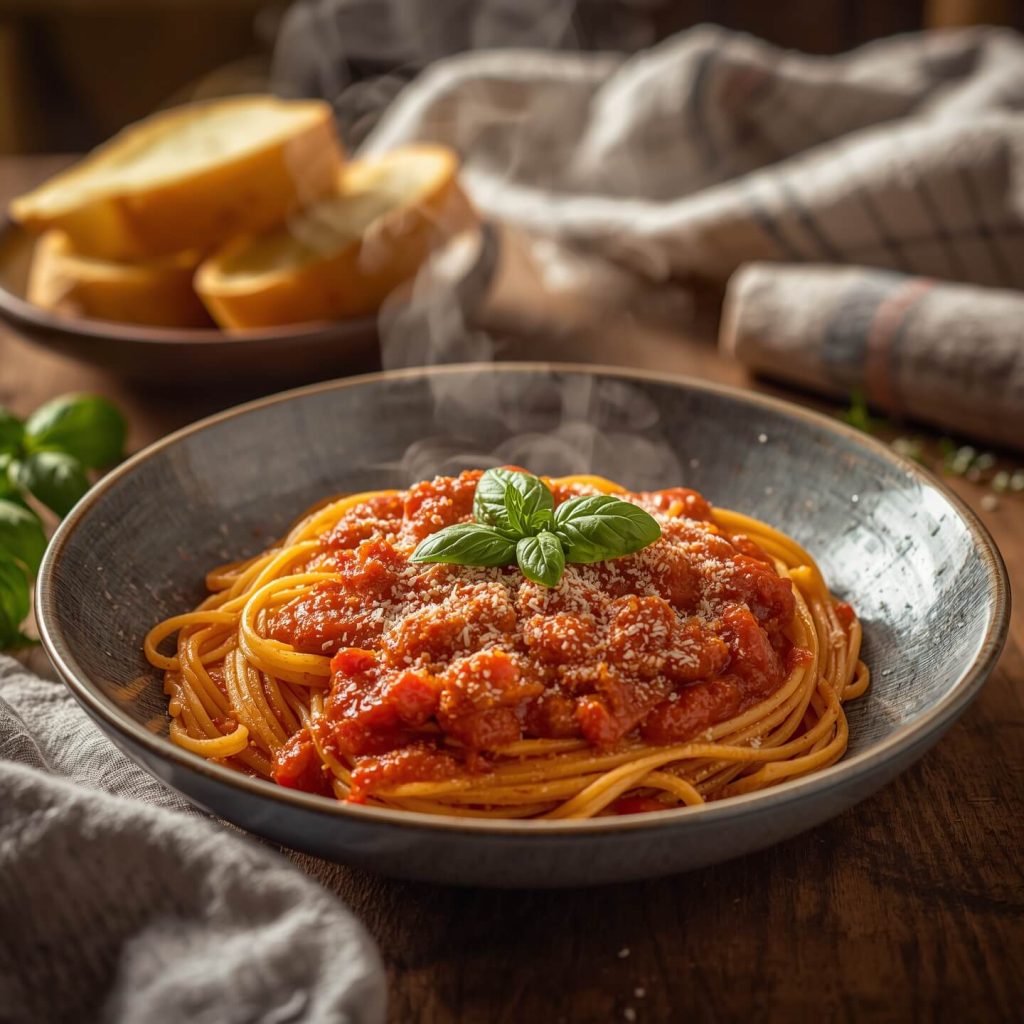
Over the years, I’ve discovered a few tips to make this spaghetti sauce extraordinary:
- Slow simmering is everything: Let the sauce cook low and slow. This draws out the natural sweetness of the tomatoes and develops deep, layered flavors.
- Balance acidity: Taste as you go. If your sauce tastes too tangy, add a pinch of sugar or finely grated carrot to mellow it out.
- Enhance flavor with wine: A splash of red wine while simmering adds richness and complexity. Allow it to cook off so only the flavor remains.
- Fresh herbs at the end: Adding fresh basil or parsley just before serving gives the sauce a bright, fresh aroma.
- Blending for texture: If you prefer a smoother sauce, use an immersion blender or food processor, but keep some chunks for a homemade feel.
These tricks ensure your sauce is restaurant-quality every time, even if it’s a simple weeknight dinner.
Common Mistakes to Avoid
Even seasoned cooks can run into pitfalls with spaghetti sauce. Here’s what to watch out for:
- Burning garlic or onions: Sauté slowly and watch carefully; burnt garlic tastes bitter and can ruin the sauce.
- Over-salting early: Salt concentrates as the sauce simmers. Season gradually and adjust at the end.
- Skipping simmer time: Rushing the sauce prevents flavors from developing fully. Patience is essential.
- Using poor-quality tomatoes: This is the heart of your sauce—fresh, ripe tomatoes or good-quality canned tomatoes make a huge difference.
- Adding too many herbs at once: Dried herbs can overpower; add gradually and taste as you go.
Avoiding these mistakes guarantees a perfectly balanced, flavorful sauce.
How to Store It
Storing homemade spaghetti sauce properly extends its shelf life and keeps it tasting fresh:
- Refrigeration: Store in an airtight container for up to 5 days. Let it cool to room temperature before sealing.
- Freezing: For longer storage, portion the sauce into freezer-safe containers or bags. It keeps well for up to 3 months.
- Reheating: Warm gently over low heat, adding a splash of water or broth if the sauce has thickened too much.
Labeling containers with the date helps you keep track, and freezing in single-serving portions makes weeknight meals effortless.
FAQ
Can I make this sauce vegetarian or vegan?
Absolutely! This recipe is naturally vegetarian. For a vegan option, avoid adding Parmesan or other cheese on top, or use a vegan cheese alternative.
Can I use fresh tomatoes instead of canned?
Yes, fresh tomatoes work wonderfully. Blanch, peel, and chop them, then simmer until they break down into a thick sauce.
Can I make this sauce in advance?
Definitely! In fact, letting the sauce sit overnight enhances the flavor. Store it in the fridge, then reheat gently before serving.
Can I freeze this sauce?
Yes, it freezes beautifully. Use freezer-safe containers and leave a little room for expansion. Thaw in the fridge overnight and reheat gently.
How can I make the sauce spicier?
Add red pepper flakes or a pinch of cayenne pepper during cooking. Start with a small amount and adjust to taste.
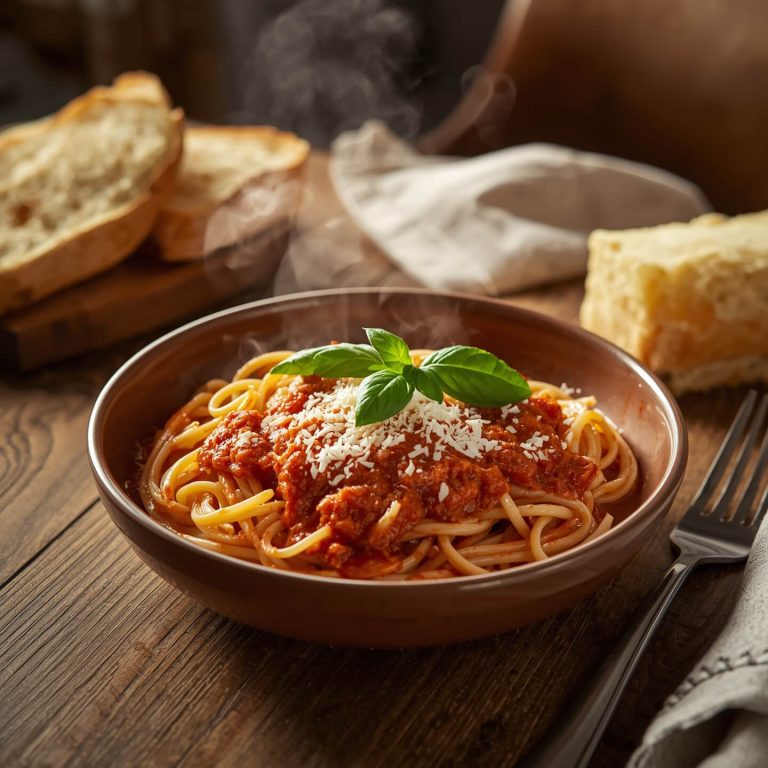
Homemade Spaghetti Sauce
This homemade spaghetti sauce is rich, aromatic, and versatile, perfect for pasta, lasagna, or as a pizza base. Slow-cooked with fresh onions, garlic, tomatoes, and herbs, it’s a comforting and flavorful sauce that elevates any meal. With simple ingredients and a little patience, you’ll create a sauce that tastes like it simmered in an Italian grandmother’s kitchen.
- Total Time: 1 hour to 1 hour 20 minutes
- Yield: 6-8
Ingredients
- 3 tbsp olive oil
- 1 medium onion, finely chopped
- 3–4 garlic cloves, minced
- 1 can (28 oz) crushed tomatoes (or 4–5 fresh tomatoes, peeled and chopped)
- 2 tbsp tomato paste
- 1 tsp dried oregano
- 1 tsp dried basil
- 1/2 tsp dried thyme
- 1/4 tsp red pepper flakes (optional)
- 1 tsp sugar or 1 small grated carrot
- Salt and pepper to taste
- Optional: splash of red wine, bay leaf
Instructions
- Heat olive oil in a large pot over medium heat. Sauté onions until translucent.
- Add garlic and cook for 1-2 minutes, until fragrant.
- Stir in tomato paste and cook 2-3 minutes to caramelize.
- Add crushed tomatoes, herbs, optional wine or bay leaf, and season with salt, pepper, and sugar.
- Bring to a simmer, reduce heat, and cook uncovered for 45-60 minutes, stirring occasionally.
- Taste and adjust seasoning. Remove bay leaf and blend if desired.
- Serve over pasta, or store for later use.
Notes
- Add fresh herbs at the end for a bright aroma.
- Adjust sweetness or acidity to taste.
- Freeze in portions for easy weeknight meals.
- Prep Time: 15-20 minutes
- Cook Time: 45-60 minutes
- Category: Main sauce / Pasta sauce
- Method: Stovetop simmer
- Cuisine: Italian
- Diet: Vegetarian
Nutrition
- Serving Size: 6-8
- Calories: 120
- Sugar: 8g
- Sodium: 320mg
- Fat: 5g
- Saturated Fat: 0.7g
- Unsaturated Fat: 4.3g
- Trans Fat: 0g
- Carbohydrates: 18g
- Fiber: 4g
- Protein: 3g
- Cholesterol: 0mg

